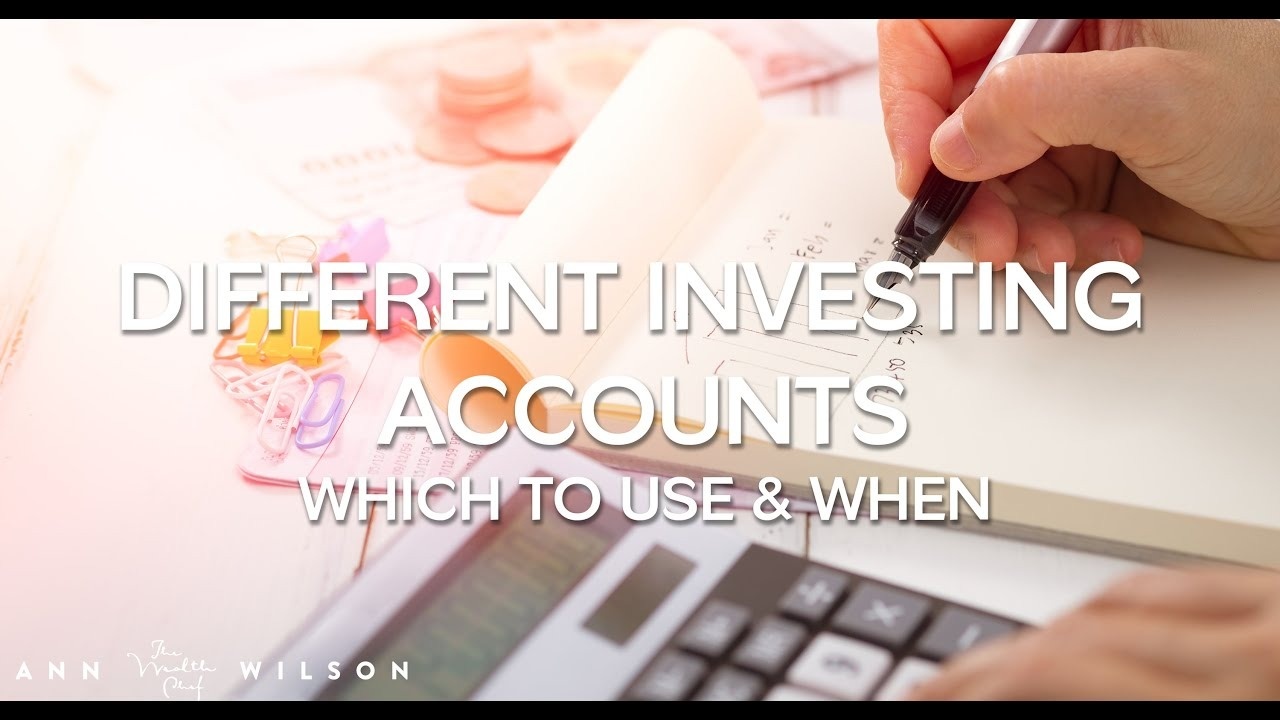
Understanding Your Different Investment Accounts
Tax Deferred, Tax Protected, and Discretionary Accounts.
Understanding Which Investment Account to Use to Maximise
Your Returns
ALERT!!! Not All Investment Accounts Are Equal
Where you hold your assets is almost as important as what assets you actually invest in.
I'm talking about which type of the three main investment account types you can invest in, in most countries.
- Retirement / Pension / Superannuation type accounts also known as tax deferred
- ISA’s / TSFA / TFIA, ROTH’s also known as tax protected accounts
- Discretionary / Dealing / Trading accounts with no tax benefit but maximum flexibility
👉 Not all of these account types are available in every country
So what the bleep are those?
In day-to-day lingo, let's talk about…
Tax Deferred Investment Accounts
Tax deferred investment accounts are called many different names but they are all essentially the same.
They are pensions, retirement annuities, retirement funding, 401K’s, a SEP, an IRA, or Superannuation.
Tax deferred is where you are incentivised to invest and build up assets to look after yourself in your old age through a tax deduction.
Governments around the world know that they cannot afford to look after you in your old age.
Social services, old age pensions and security structures are bankrupt and the aging population and people living longer is making it more and more impossible for governments to provide anything other than very, very basic survival needs.
Recognising this, Governments incentivize us to put some money aside so we can support ourselves when we're no longer working. Typically, this is in the form of a tax deferred allowance where you can invest some of your actively earned income now and get a tax rebate on this amount (i.e. reduce your current income tax).
The monies go into this retirement, pension, superannuation, IRA account and in addition to the tax rebate, all growth and income generated by the investments within the account are also free of tax.
Remember assets grow in two ways, they produce income and they grow in value called capital growth. So any income and capital growth of the assets that are invested in this tax deferred pot also grow free of tax, so compounding has more to work on.
Many people tell me they don’t want to use tax deferred accounts because they perform badly.
Please get this… if your pension, IRA, RA, Superannuation etc is underperforming…
It’s not the account that’s the problem, the problem is what the money within the account is invested in.
Most tax deferred accounts end up being invested in high-fee, poor performing actively managed funds. This is why they underperform. I call these TV dinner investments - bad for your wealth and great for the financial industry that rakes in massive fees.
To learn more about why actively managed funds are bad for your wealth and what to do instead go here to get free training on how to successfully invest in each of your investment pots.
The most important thing to understand is this pot is tax deferred, NOT tax free. You still have to pay tax - just later!
Money goes in, you get a tax benefit now, which means more of your money can work for you instead of going to the taxman, but when you start withdrawing from this account, you pay tax.
When you hit a certain age you can access the investments within the tax deferred account and at that point you start paying tax on your draw-down, hence tax deferred.
Tax Free Investment Accounts
Tax free investment accounts are super sexy, and my favorite investment account by far. Unfortunately these are not available in every country, but if it is available in your county, use it.
Tax free investment accounts are:
- Individual Saving Account - UK
- Tax Free Saving Account - South Africa, Japan, Canada
- ROTH - USA
A tax free investment account is another way governments are trying to incentivise people to look after their own financial wellbeing.
With a tax free investment account, the money that goes in is POST-TAX money. So there is no tax benefit upfront.
The benefit is that all income and capital growth produced by your investments within this investment account are FREE of tax AND you pay no tax on withdrawal.
This is Super Juicy!
Because you pay no income or capital gains tax on the investments within these accounts, your money works harder for you and you end up getting higher returns from the same investment invested within a tax-free account than outside of the tax-free wrapper.
Unfortunately the naming of these accounts have misled people into thinking they are saving accounts, and many people are sitting with these fabulous tools and not making the most of them.
You do not want cash sloshing about in your ISA, or your TFSA! That’s like having an electric kettle, but never plugging it in to get hot water and only ever using it as a water jug!
You want your highest returning investments working for you within your tax-free account. That way you get the greatest benefit.
You want to be investing in these accounts, not saving.
If you’re unclear on the difference between saving and investing go here and read this article which explains the difference.
You want to be investing in stocks and shares (via index trackers), in property via REIT’s and index trackers, in commodities and so forth.
With your tax-free account you want to max out your annual allowance and keep those funds invested year after year until you are ready to feed off your investment feast. The next big benefit of your tax-free investment account kicks in at this point, because whatever you withdraw from this account is free of tax. So by having this account in addition to your tax deferred you can draw-down from both of them in a structured way to minimise your tax.
WHile you are building up your wealth, you want to be using both your tax-deferred and tax-free accounts and allowances as this is going to make a big difference in how you manage your tax down the line.
Discretionary Investment Account
The third investment account you have is your discretionary account. This is the account you use after you have maxed out your allowances on the first two accounts.
This account has no tax benefits BUT it is the most flexible and has no restrictions on how much you can invest in it, when you can access the funds, what the funds can be invested in etc.
What should you be investing in, within these accounts?
If you don’t know this yet - I’m a HUGE INDEX TRACKER FAN!
Index trackers are super juicy low cost low cost funds which hold shares in great companies around the world. And it’s not only shares you can invest in via index trackers - you can also invest in investment property, fixed income assets, commodities and precious metals such as physical gold and silver.
I hope this lesson on the different kinds of investment accounts has helped clarify for you where and what they're about and why they're so sexy, and what is the benefit of each.
Remember, your assets create your freedom, not you and it's the quality of your assets, not the quantity that counts.
Big love



